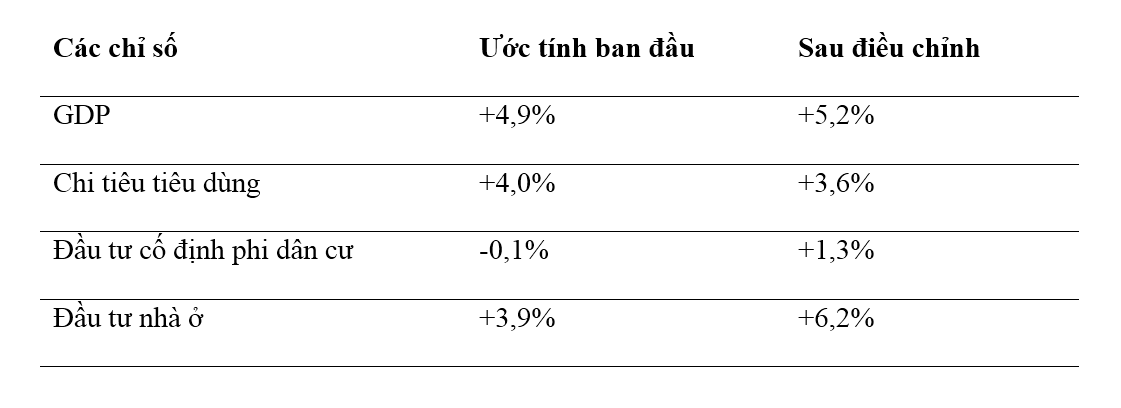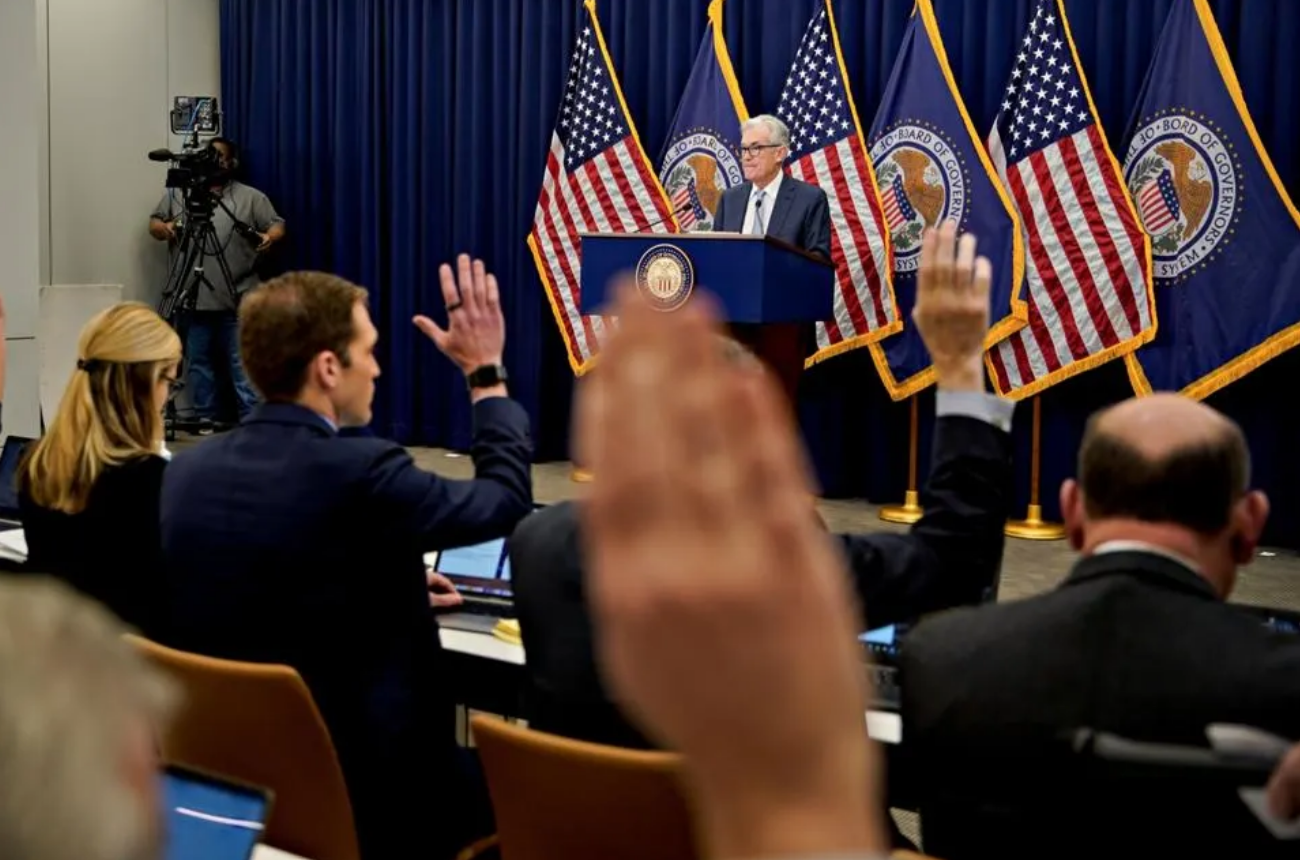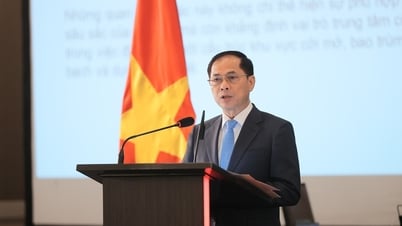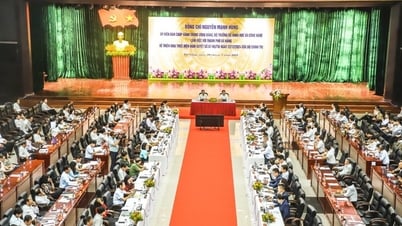Despite higher interest rates, US consumers spent enough to help boost economic growth at a 5.2% annual rate in the third quarter of 2023, higher than the previous estimate of 4.9%, a report released by the US Commerce Department on November 29 showed .
This means the world's No. 1 economy unexpectedly accelerated strongly from 2.1% in the second quarter of 2023. It shows that the US gross domestic product (GDP) grew at the fastest quarterly rate in nearly 2 years and continued to grow despite concerns of a prolonged economic recession from late 2022.
Consumer spending, the lifeblood of the economy, grew at an annualized rate of 3.6% in the third quarter of 2023, still healthy but down from the previous estimate of 4%, according to the US authorities. Private investment increased at an annualized rate of 10.5%, including a 6.2% increase in housing investment, despite higher mortgage rates.
Additionally, increased spending and investment by governments at all levels – federal, state and local – also boosted third-quarter growth.
The world's largest economy has proved resilient even as the US Federal Reserve (Fed) has raised its benchmark interest rate 11 times since March 2022 to combat the worst inflation wave in four decades.
Higher interest rates have significantly increased borrowing costs for consumers and businesses. But they have also helped to ease inflationary pressures: The consumer price index (CPI) was 3.2% in October compared to 12 months earlier, a marked improvement from the 9.1% year-on-year inflation recorded in June 2022.
Growth cools down
However, in the fourth quarter of this year, economists say growth is likely to slow significantly due to the cumulative impact of higher borrowing rates on consumer and business spending.
For example, TD Economics – a global economic performance analysis firm focusing on North America, Europe and Asia – expects the US economy to grow at an annual rate of 1.8% in the October-December period (fourth quarter of 2023).
“There’s no sign of doom and gloom in today’s report, but the pace of growth is cooling,” said Christopher Rupkey, chief economist at financial markets research firm FWDBONDS in New York, referring to the Commerce Department’s November 29 report. “There’s simply not much wind in the sails of the economy in the final quarter of the year.”

The report released by the US Department of Commerce on November 29, 2023 showed that the US economy grew 5.2% annually in the third quarter of 2023. Table: Bloomberg
“As we warned last month, evidence of economic strength over the summer could mislead some to believe that the economy is on a strong trajectory. That is not the case,” Gregory Daco, chief economist at EY-Parthenon, Ernst & Young’s global strategy consulting arm, said in a note on Nov. 29.
“We continue to believe that as people perceive that the cost of everything is higher than before the pandemic, the burden of debt service increases and the pace of job growth slows, all of this will reduce the ability and desire of consumers and businesses to spend and invest,” Daco said.
The Organization for Economic Cooperation and Development (OECD) forecast on November 29 that the US economy will grow only 1.5% in 2024, down from 2.4% in 2023, as the Fed continues to keep interest rates high.
Signals from the Fed
Investors are betting that the Fed is likely to keep interest rates on hold for a third straight policy meeting next month, following recent signals from US central bank officials.
Fed officials pay attention to many different aspects of the US economy, including growth, when considering monetary policy to ensure a “soft landing.”

US Federal Reserve Chairman Jerome Powell takes questions during a press conference following the Federal Open Market Committee (FOMC) meeting in Washington DC, December 14, 2022. Photo: Forbes
“Overall, it looks like growth is slowing as I expected, supporting continued disinflation,” Fed Governor Christopher Waller said on November 28 at an event hosted by the American Enterprise Institute.
Mr. Waller, a top Fed official and member of the Federal Open Market Committee (FOMC) who has often advocated a hawkish stance on inflation, said he was “increasingly confident that policy is now well positioned to slow the economy and return inflation to 2%,” the Fed’s inflation target.
Although the Fed is likely to keep interest rates at a 22-year high at its December 12-13 policy meeting, some officials believe there is still plenty of room to raise rates.
Fed Governor Michelle Bowman, one of the central bank’s most hawkish officials, said on November 28 at an event in Salt Lake City that she expects “we will need to raise the federal funds rate further to get inflation back down to our 2% target in a timely manner,” arguing that the inflation decline is at risk of stalling .
Minh Duc (According to Reuters, AP, CNN)
Source

























![[Photo] National Assembly Chairman attends the seminar "Building and operating an international financial center and recommendations for Vietnam"](https://vphoto.vietnam.vn/thumb/1200x675/vietnam/resource/IMAGE/2025/7/28/76393436936e457db31ec84433289f72)










































































Comment (0)